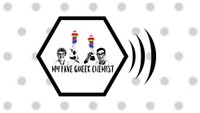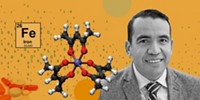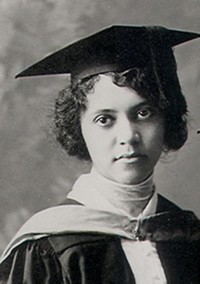×
CEN's 2022 Trailblazers
Tehshik P. Yoon wields light to open new possibilities for organic synthesis
Kelly N. Chacón characterizes enzymes that break down toxic metals
Barbara Belmont is devoted to nurturing the next generation of scientists
Charlie Wand uses simulations to study molecules' behavior
Nancy Scott Burke Williams has unraveled platinum's penchant for making and breaking carbon bonds
Jennifer Petter wants to interfere with RNA to discover new drug targets
Andre Isaacs inspires future chemists on social media and on campus
Alison Wendlandt One on one with Bec Roldan
Raul Navarro One on one with Grace Wang
Polly Arnold explores the chemistry of rare earths and radioactive elements
Carolyn L Ladd One on one with Kirstin S. Bode
Song Lin One on one with Alby J. Joseph
Nicholas Ball One on one with Ali McKnight
Carolyn Bertozzi One on one with Pauline Navals
Melissa Gish One on one with Matthew A. Wiebe
Benny C. Chan is reshaping the structures of chemistry curricula and thermoelectric materials
Jason S. Tedrow adapts new technologies to scale up drug manufacturing
David Smith builds self-assembling nanogels for regenerative medicine
C&EN's 2021 Trailblazers Celebrating Black Chemists and Chemical Engineers
C&EN's 2020 Trailblazers Celebrating badass Women Entrepreneurs in Chemistry
Historical Profiles
Contributors
Advertisement
Grab your lab coat. Let's get started
Welcome!
Welcome!
Create an account below to get 6 C&EN articles per month, receive newsletters and more - all free.
It seems this is your first time logging in online. Please enter the following information to continue.
As an ACS member you automatically get access to this site. All we need is few more details to create your reading experience.
Not you? Sign in with a different account.
Not you? Sign in with a different account.
ERROR 1
ERROR 1
ERROR 2
ERROR 2
ERROR 2
ERROR 2
ERROR 2
Password and Confirm password must match.
If you have an ACS member number, please enter it here so we can link this account to your membership. (optional)
ERROR 2
ACS values your privacy. By submitting your information, you are gaining access to C&EN and subscribing to our weekly newsletter. We use the information you provide to make your reading experience better, and we will never sell your data to third party members.
Synthesis
Movers And Shakers
Nancy Scott Burke Williams has unraveled platinum’s penchant for making and breaking carbon bonds
This inorganic chemist also works to improve undergraduate inorganic chemistry education and has expanded opportunities for other transgender scientists
by Helen Santoro, special to C&EN
April 8, 2022
| A version of this story appeared in
Volume 100, Issue 12

Credit: Liam Woods
Nancy Scott Burke Williams
Some carbon-carbon and carbon-hydrogen bonds are incredibly difficult for chemists to make and break. But metals like platinum can help create and shatter these stable bonds. Understanding how platinum can accomplish this feat has been the focus of Nancy Scott Burke Williams’s career.
Vitals
Hometown: Puyallup, Washington
Education: BS, Harvey Mudd College, 1995; MS, 1997, and PhD, 2000, University of Washington
Current position: Associate professor of chemistry, W.M. Keck Science Department, Claremont McKenna, Pitzer, and Scripps Colleges
LGBTQ+ identity: Queer trans woman
First job: Picking raspberries in the Orting Valley
Best professional advice you’ve received: Write your own narrative, or else other people will write it for you, and you won’t like what they write.
Over the past 3 decades, Williams, a chemistry professor in the W.M. Keck Science Department of Claremont McKenna, Pitzer, and Scripps Colleges, has greatly contributed to scientists’ understanding of platinum’s special bond-breaking and bond-making qualities. She has also redefined how inorganic chemistry is taught in colleges across the US and—as a transgender woman—helped pave the road for future queer chemists.
Williams, who is a mechanistic organometallic chemist, first fell in love with chemistry in high school. Yet when she set foot on Harvey Mudd College’s campus in California as an undergraduate, she wasn’t completely sure she would major in the field. “I had a real interest in music and history and a bunch of other things besides chemistry,” Williams says. As the semesters passed, however, she found many amazing chemistry mentors who solidified her passion for the elements. “It just seemed like the path that was right for me.”
In graduate school at the University of Washington, Williams researched how complexes made up of platinum and other compounds form carbon-oxygen bonds. After receiving her PhD, she returned to California to start a lab at Claremont McKenna College, where she and her group of undergraduate students research making and breaking carbon-carbon and carbon-hydrogen bonds using platinum compounds.
“I got really intrigued by the larger problem of: How is it that these transition metals are capable of effecting these reactions, and can we actually control the way that these reactions happen?” Williams says. A big part of this work involves designing ligands—molecules or ions that latch on to a central atom (in this case, platinum) and change a metal complex’s structure and reactivity. The group synthesized a new metal-ligand pairing in 2019 and thinks it will excel at breaking carbon-hydrogen bonds. Williams hopes that her work will inspire future chemists to develop even better pairings that can break these bonds more efficiently.
The way in which Williams designs new ligands is extremely impressive, says Irving Rettig, who studied under Williams as an undergraduate student and is now a postdoctoral researcher at Reed College. Williams has wonderful chemical insight into how metals and ligands might behave, Rettig says. “Nancy has been able to construct these things with her undergraduate students that perform amazingly.”
Williams’s passion for inorganic chemistry has also led her to recognize how out of date undergraduate curricula are, particularly in how they teach chemical bonding. Many courses still cover old bonding models, she says. “I’m not satisfied with how we teach fundamentally what holds atoms and molecules together.”
She helped found the Interactive Online Network of Inorganic Chemists (IONiC), a community dedicated to improving liberal arts inorganic chemistry education. The group’s website, called Virtual Inorganic Pedagogical Electronic Resource (VIPEr), is filled with ready-to-use tools and documents that can help professors teach sophisticated bonding theories in simpler ways.
Flipping the script and celebrating visibility means something in the trans and queer community that is unique.
“The founding and nurturing of the IONiC VIPEr has been transformative for inorganic chemistry education,” says Mir Bowring, a chemistry professor at Reed College. “A theme of Nancy’s contributions is connecting human relationships to the practice of inorganic chemistry.”
In 2013, Williams came out publicly as transgender. She says she had a realization: “I could be a professor and a chemist and be trans. That those were not mutually exclusive.” This was huge for Williams, as visibility as a transgender person often comes with the threat of harm and violence. “Flipping the script and celebrating visibility means something in the trans and queer community that is unique,” she says. Since coming out, Williams has been a vocal trans activist and has dedicated much of her time to transforming the political landscape in California and other states through canvassing and talking to voters about LGBTQ+ issues. Over the years, she has campaigned for nondiscrimination legislation for trans people, particularly trans students.
For Rettig, a transgender man, Williams’s decision to come out has had a hugely positive impact on the field of chemistry. “She really has inspired a lot of younger chemists to find a united identity in being a chemist and being an activist,” he says. Currently, Rettig is working with other queer scientists to set journals’ policies that allow trans authors to update their names after publication.
Yet even with all her accomplishments, Williams believes there is still much more to be done. “I don’t see trans people of color celebrated in our field like I know they should be,” she says. “I know they love chemistry. I know they’ve taken these classes. I know that some of them have gotten those degrees. And if they’re not out, that’s a very troubling judgment on our field.”
Chemical & Engineering News
ISSN 0009-2347
Copyright © 2024 American Chemical Society





Join the conversation
Contact the reporter
Submit a Letter to the Editor for publication
Engage with us on Twitter